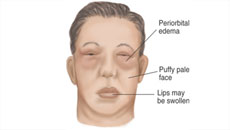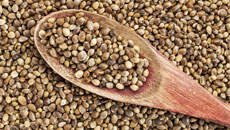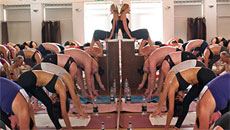There is no doubt that society today is more health conscious today than ever before. People want to know what there putting into there bodies, they want knowledge about supplements and strategies for exercising. In other words, anything that will increase longevity but just as importantly, increase quality of life.
It is quite obvious that there will be differences in opinion as far as the pros and cons of foods, supplements, exercises etc. One such difference that has led to bitter debate is that between the benefits and dangers of exposure to sun. We know that vitamin D is good for bone health and has been proven to fight prostate, colon, and breast cancers. Vitamin D is produced by way of exposure to the sun. The sun emits ultraviolet light. However, ultraviolet light causes an array of problems, most notably skin cancers. Are we beginning to see why this has become such a balancing act.
It is now common knowledge that vitamin D is an essential part of our diet. Although the recommended 1000 IU is difficult to achieve through diet alone, a more practical way to achieve optimal vitamin D levels is to expose the skin to small doses of sunlight on a regular basis. Sun exposure triggers the skin to produce vitamin D, which is then metabolized and converted in the body to its active and useful form. There is still much to learn about how much vitamin D people need for good health, how much might be too much, and perhaps most importantly, the best way to get enough.
There is no dispute among medical professionals that vitamin D is beneficial for our health, and there is no dispute that sun exposure is the major source of vitamin D for most of us. But there is also no dispute that exposure to ultraviolet rays from the sun and other sources can be harmful. This is why making recommendations about vitamin D is problematic. There is growing evidence that vitamin D helps protect against colorectal cancer; now a group of researchers who have long studied the vitamin say the same is true for breast, ovarian and prostate cancers.
In a new analysis, researchers contend that taking 1000 international units (IU) of vitamin D daily can cut colon, breast, and ovarian cancer risk. The researchers urged public health officials to increase recommendation for vitamin D consumption, calling the vitamin an inexpensive tool for preventing cancers that claim millions of lives each year. The easiest way for the body to get vitamin D is through sun exposure, because UV rays from the sun trigger the natural synthesis of the vitamin in the body. But the researchers did not address sun exposure in their analysis, focusing instead on the message that people need to get more vitamin D thought the foods they eat and vitamin supplements. Other research frowns upon exposure to sun, suggesting this is often a precursor to dangerous skin cancers.
Ultraviolet light in the form of UVA and UVB is known to raise the risk of melanoma and non-melanoma skin cancers, as well as cataracts. No one believes this more ardently than leaders of the dermatology profession. However, there are some interesting facts that I discovered during my research. For example, some studies suggested that workers that predominantly worked indoors had higher rates of melanomas that those who worked outdoors. Another intriguing finding was that incidence rates of melanoma were higher on the trunk of the body than on the more commonly sunlight-exposed head and arms. This alone calls into question the notion that exposure to sunlight equals increased rates of melanoma.
In yet another study, researchers found that laboratory studies showed that vitamin D suppresses the growth of malignant melanoma cells in tissue culture. They suggested that vitamin D could inhibit previously initiated melanomas from becoming clinically apparent. Although I am no expert in this field, common sense prevails and my opinion is that supplementation and small amounts of sun exposure are the preferred methods of obtaining vitamin D. The answer simply is balancing sunshine with vitamin D supplements.

Until more research is done, the key is to use common sense when deciding what constitutes a “small amount” of sun exposure. How much sun any single person might need depends on many things: how old they are, how much vitamin D they get from their diet, how dark their skin is, and how intensely the sun shines where they live. Avoiding the sun at all costs, for most of us, simply doesn’t make sense. But that certainly doesn’t mean people should bake themselves outside or in a tanning booth. What you do not do is seek the sun. That would be absolutely the wrong message to send, and that is what has so many in the skin cancer prevention community so concerned.
Although winter is fast approaching and we often long to see the sun, vitamin D supplementation becomes even more important. SAD or seasonal affective disorder seems to be more prevalent during the winter months when there is little exposure to sun. As a result, it is of utmost importance to take advantage of the sun during this time of year and use more precautions during the summer months.
In conclusion, use common sense when in the sun and understand that vitamin D is absolutely essential and our typical American diet does not provide an adequate supply of vitamin D. Supplement your diet with this most essential vitamin, use precaution when in the sun yet get adequate amounts of sun as this seems to be the consensus of my studies.




